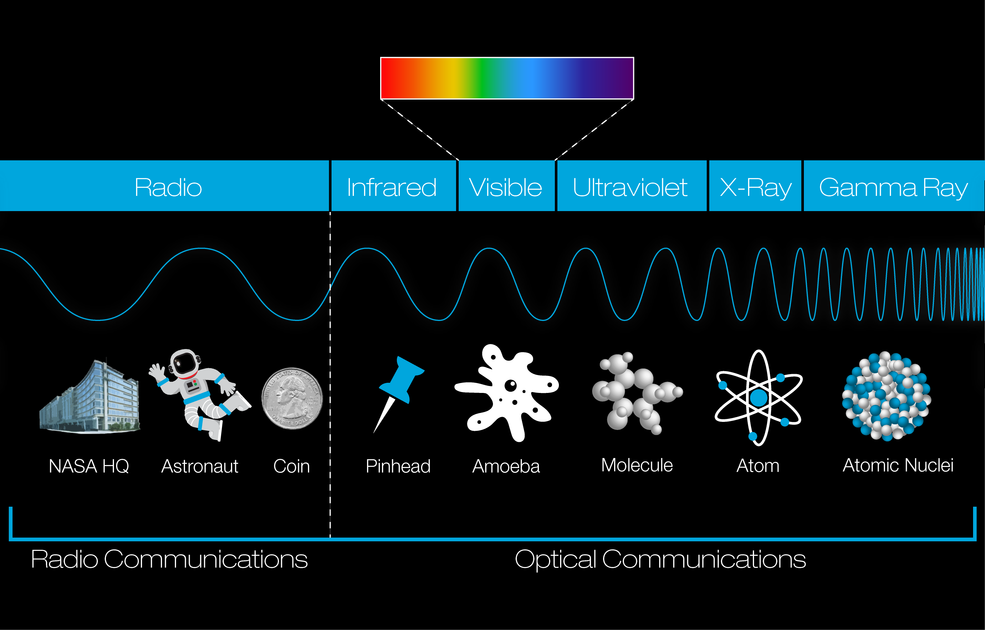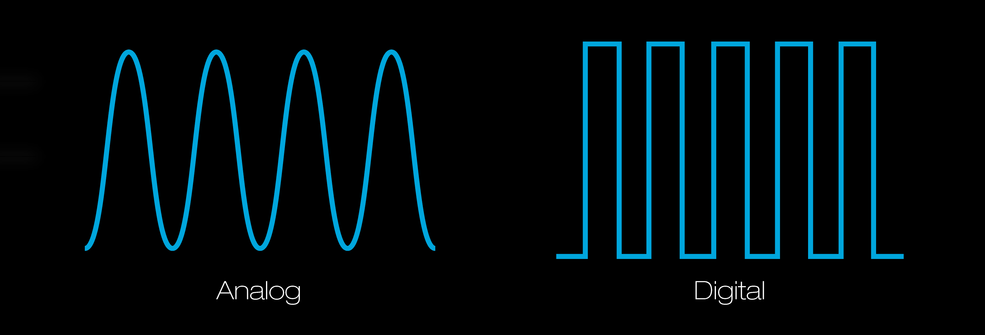Virtually every endeavor that NASA undertakes requires communications or data transfer via the electromagnetic spectrum. NASA relies solely on Space Communications and Navigation (SCaN) to provide this vital service to all of its missions. Today and in the coming years, NASA will implement programs encompassing space exploration, scientific research, technology development, and all of these efforts will need access to this limited resource.
What is the spectrum made of?
The electromagnetic spectrum is comprised of all frequencies of electromagnetic radiation that propagate energy and travel through space in the form of waves. Longer wavelengths with lower frequencies make up the radio spectrum. Shorter wavelengths with higher frequencies make up the optical spectrum. The portion of the spectrum that humans can see is called the visible spectrum. However, NASA utilizes a number of tools that allow us to communicate and create images utilizing almost every single component of the electromagnetic spectrum in one way or another.
How is the spectrum used?
People use the electromagnetic spectrum every day. The car radio, television, smart phone and microwave are just a few examples of the electromagnetic spectrum used every day.
What is electromagnetic energy?
Frequency and wavelength are both forms of electromagnetic energy. Frequency refers to the number of crests that pass a give point. One wave, or cycle, per second, is called a Hertz (Hz). Wavelength refers to the distance between crests and they range in size from very small to very big as seen in the illustration below. Electromagnetic energy travels in waves and spans a broad spectrum from very long radio waves to very short gamma rays. Electromagnetic waves do not need a medium in order to propagate, which means they can travel through air, solid materials, and also through the vacuum of space.
Characteristics
The characteristics of the electromagnetic spectrum are the propagation features and the amount of information, which signals can carry. In general, signals sent using the higher frequencies have shorter propagation distances but a higher data-carrying capacity. These physical characteristics of the spectrum limit the range of applications for which any particular band is suitable. Some spectrum (such as in the (UHF) band 300-3000 MHz) is known to be suitable for a wide variety of services and is in great demand.
There are two important types of transmissions to understand: analog and digital. Analog signal transmission information (sound, video, or data) travels in a continuous wave whose strength and frequency vary directly with a changing physical quantity at the source. Digital signal transmission information is converted to ones and zeros which are formatted and sent as electrical pulses. Advantages of using digital signals include greater accuracy, noise reduction (unwanted signals) and an increased capacity for sending information.
Analog vs. digital
Electromagnetic spectrum is a limited natural resource. The spectrum waves naturally propagate outward in all directions. Transmitters can be focused to transmit their signals to a single specified location. Likewise, receivers can be focused to maximize signal reception. The receiving antenna may still detect unintended signals that can interfere with the reception of the intended signal. To avoid signal interference problems, multiple users cannot transmit radio signals at the same frequencies, at the same time in the same direction. As soon as one user stops transmitting signals over a portion of the spectrum, another can immediately re-use it. The spectrum is scarce; at any given time and place, one use of a frequency precludes its use for any other purpose.




























